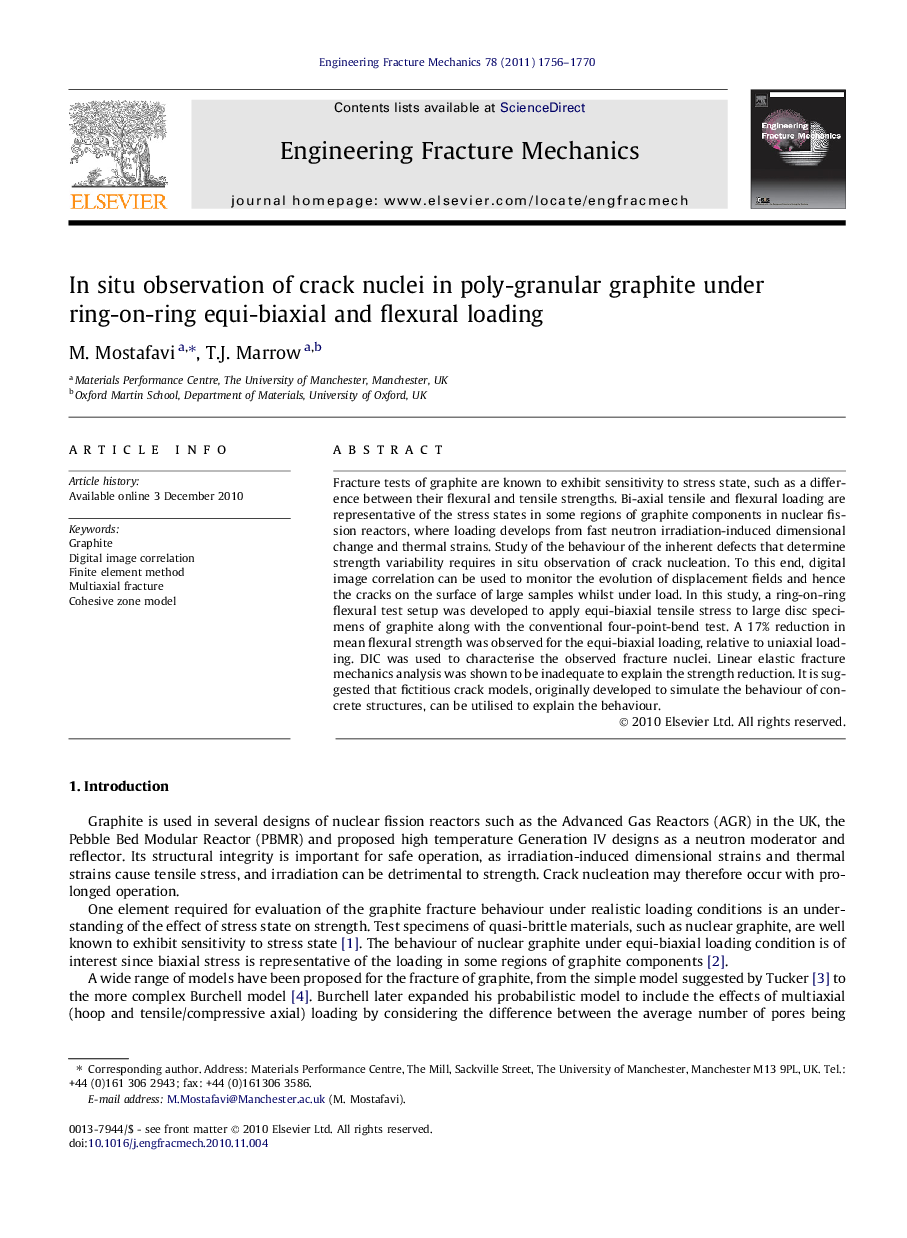| Article ID | Journal | Published Year | Pages | File Type |
|---|---|---|---|---|
| 771146 | Engineering Fracture Mechanics | 2011 | 15 Pages |
Fracture tests of graphite are known to exhibit sensitivity to stress state, such as a difference between their flexural and tensile strengths. Bi-axial tensile and flexural loading are representative of the stress states in some regions of graphite components in nuclear fission reactors, where loading develops from fast neutron irradiation-induced dimensional change and thermal strains. Study of the behaviour of the inherent defects that determine strength variability requires in situ observation of crack nucleation. To this end, digital image correlation can be used to monitor the evolution of displacement fields and hence the cracks on the surface of large samples whilst under load. In this study, a ring-on-ring flexural test setup was developed to apply equi-biaxial tensile stress to large disc specimens of graphite along with the conventional four-point-bend test. A 17% reduction in mean flexural strength was observed for the equi-biaxial loading, relative to uniaxial loading. DIC was used to characterise the observed fracture nuclei. Linear elastic fracture mechanics analysis was shown to be inadequate to explain the strength reduction. It is suggested that fictitious crack models, originally developed to simulate the behaviour of concrete structures, can be utilised to explain the behaviour.
